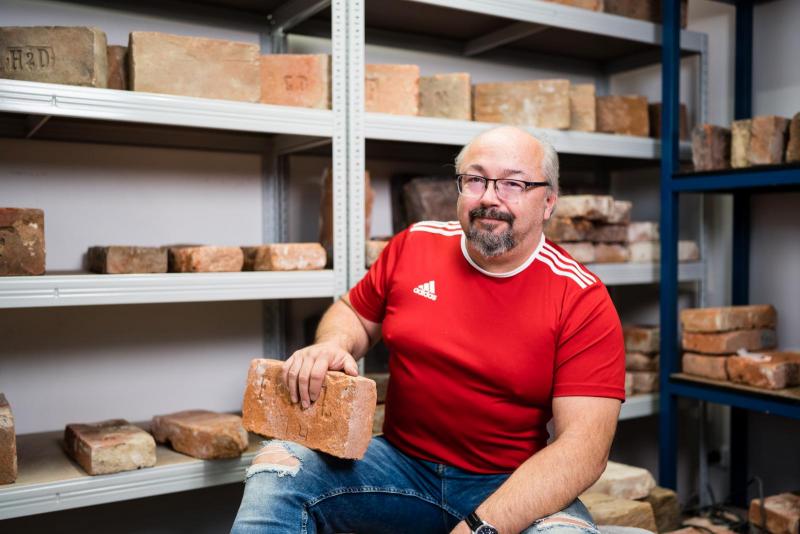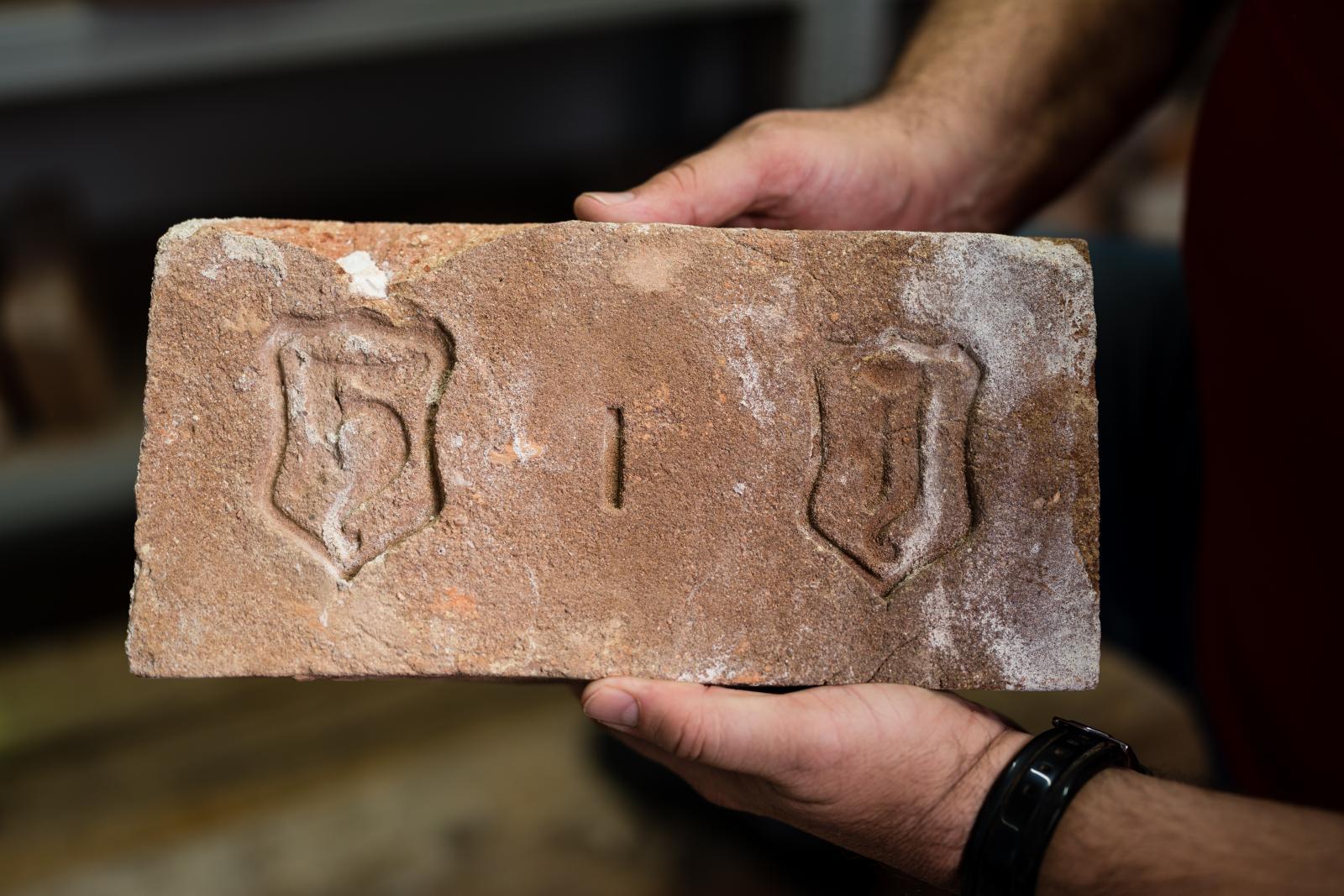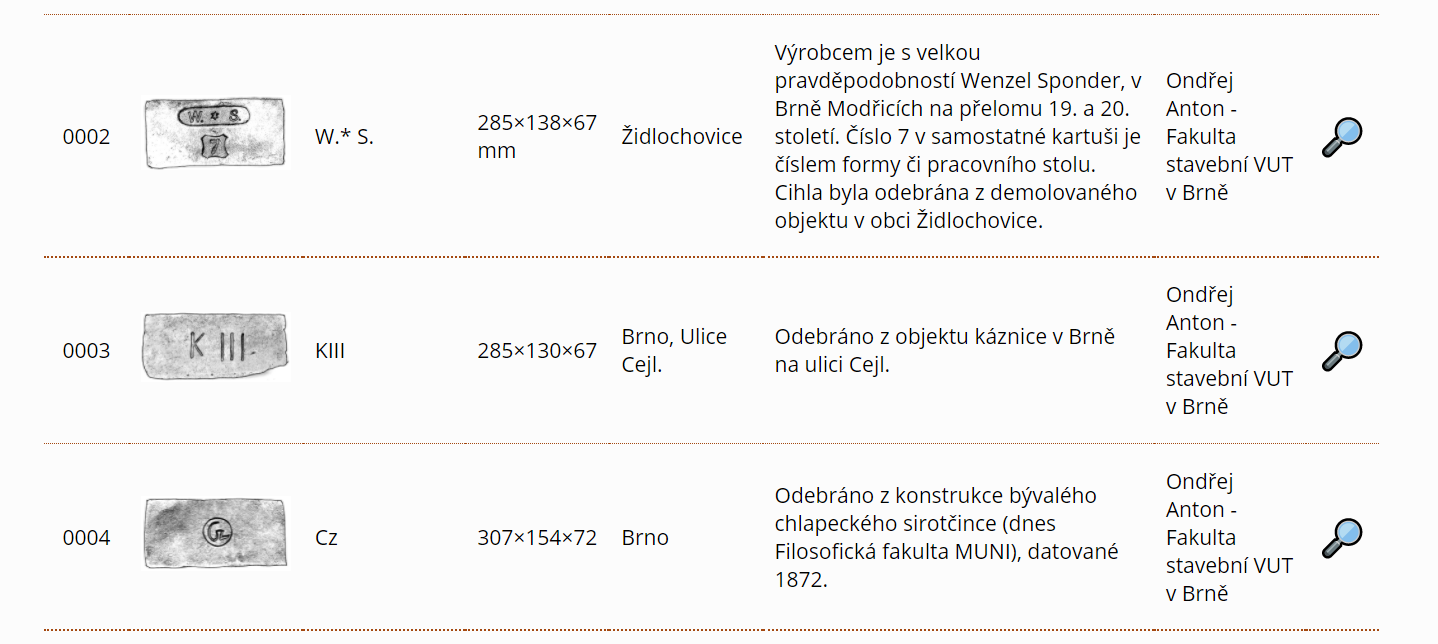Topic
In the brick database there are hundred of years old pieces and curiosities with animal paw prints

To most people, bricks are a regular, if almost unavailable, building material right now. Researchers from the Faculty of Civil Engineering at the BUT (Brno University of Technology) know that behind every such brick there is a long history and sometimes an interesting story. Scientists from Brno University of Technology have focused on historical bricks, just as others collect coins or postage stamps, After two exhibitionsthey come with a databaseto which they are looking for information from similar enthusiasts like Ondřej Anton.
What is behind the creation of the online brick database?
We would like to have a database including – to be optimistic – all known marked bricks that occur in the Czech Republic. But it's a terribly ambitious thing.
How to imagine such a historical brick?
Bricks were marked on our territory, although rather rarely, but the greatest boom occurred especially in the 18th and 19th centuries. We know that from 1836 manufacturers in Bohemia were obliged to mark every brick, but the authorities no longer decided what the design should be, and what is even more surprising, there was no record keeping marks. It was entirely up to the discretion of the producers how they would conceive it.

How did it manifest itself?
Some people began to engrave or place metal marks in the moulds in the form of reliefs and initials. Others have seen this as an ideal advertising opportunity, so we have beautifully graphic elaborate crests and inscriptions with a full name, address or patent reference. Well, others have simplified it as much as possible, so they put in one letter or number.
Are you managing to fill your database?
Nowadays it is very difficult to trace the origin of bricks, especially since there were hundreds, if not thousands of brickyards in the Czech Republic. In Brno alone, we found the location of hundreds of historical brickworks. We therefore start with the collections of official institutions such as museums. We want to map the collection funds, put them on the website and give an example to private collectors of what this should look like.
Is it your goal to have the largest – even if digital – collection?
We want to have as complete information as possible, and most importantly, we want it to be credible. But approaches to collecting are different. A lot of private enthusiasts aim to have as many different marks as possible. They often create their own databases, but we are missing important data, which is a pity. We are not their competitors, we would like to cooperate. Local collectors also have the advantage of a strong connection to the region.
What should the database be used for and for whom?
At first we didn't realize that it could be a place for researchers. The database will contain thousands of bricks and mouldings, as well as a link to the depository where the brick is housed and its collection number. Anyone can simply filter the bricks in the database and immediately see where they can continue their research.
Did you manage to get any private collection?
We cooperate with the Centre for Building Heritage of the National Technical Museum, which is located in the monastery in Plasy. We managed to save for the museum the collection of probably the largest Moravian brick collector, who was no longer able to take care of it. It was a large collection not only of bricks, but also of archival materials. When we took it over, we discovered interesting pieces from the 18th century that we hadn't known about. There were beautiful calligraphic inscriptions and years. In Plasy, some pieces went straight to the exhibition.
Do you still come across news in your research?
For example, we did research in Velké Meziříčí, where a synagogue in the Neo-Gothic style was built at the end of the 19th century, like the Red Church in Brno. This means admitted red brickwork, but they had some of the bricks blackened to create mosaics and ornaments. We were interested in how they did it then, and we found out that they soaked some of the bricks in asphalt-tar emulsion, let them dry and used them for masonry.
Institutions also contact us when they carry out a building survey and discover marked bricks. Last year we got to the reconstruction of the former post office in the centre of Brno. Thanks to this, we discovered two more marks that we didn't know. We found, among other things, bricks marked MBV. By coincidence, an archaeologist colleague had read in the Austrian magazine Compass not long before that in 1872 the Moravian Building Association, Mährische Bauverein (MBV), was founded in Brno, which had purchased one brickyard and two stone quarries by the beginning. We found bricks marked MBV in the building they built three years later, but we could not find out which brick they bought. These are wonderful stories and a lot of local collectors and historians are experiencing something similar, so we'd like to put our heads together.
(tk)
Water losses in the Czech Republic reach 15 percent, the situation is getting better every year
Conductive materials from FCE to ground buildings and warm up roads
Software as a bachelor thesis helps with soil erosion research
FCE researchers' timeless natural wastewater is one of the best construction in the region
Corrosion can be detected and predicted. Experts from FCE BUT develop new technology for bridge structures
